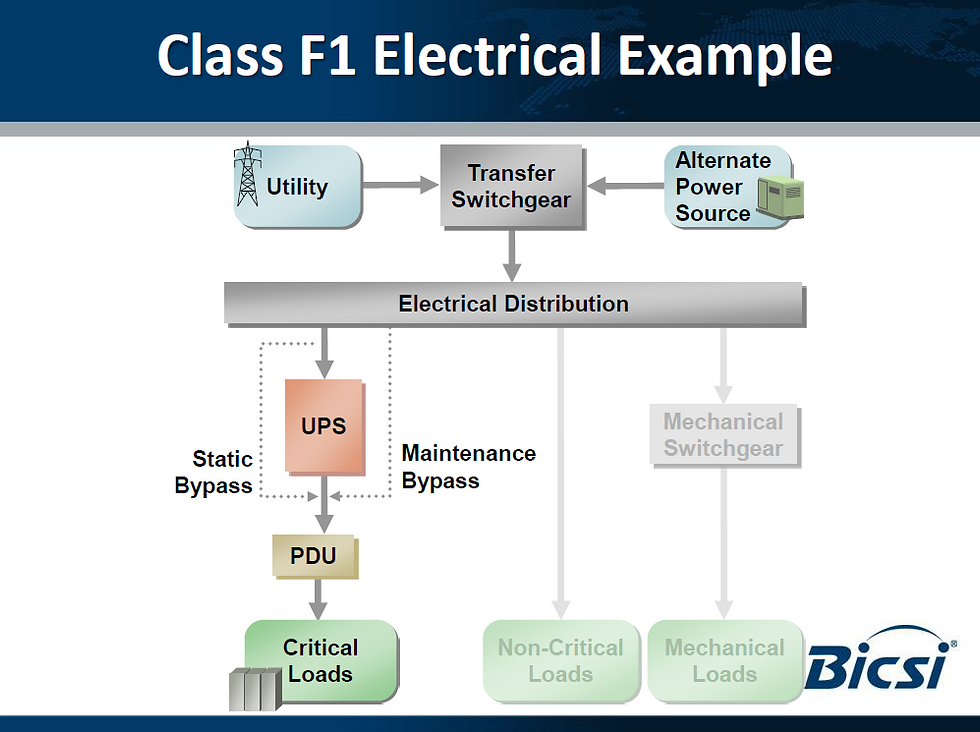How Redundant is Your Data Center...Part 2
- rjwanko@yahoo.com
- May 15, 2017
- 3 min read

In our last post we discussed different Tiers of data center redundancy as defined by the Uptime Institute. As we mentioned, Building Industry Consulting Service International, Inc (BICSI) also offers a similar set of parameters defining levels of data center availability. You'll notice similarities between the two, with the biggest differential being that BICSI applies their levels to specific systems within the data center environment. Let's take a look...
ANSI/BICSI 002-2014, Data Center Design and Implementation Best Practices
BICSI lists their levels within the ANSI/BICSI 002 Standard. The standard can be purchased directly from BICSI by following the link below:
You can also find a complete TOC and other information about the standard on the page linked above. If you're a data center professional, you should check it out! We'll be talking about "Classifications" as defined within this standard.
BICSI 002 Availability Classification
OK remember the "Tiers" we talked about? Quick recap:
Tier 1: Specialized services with no redundancy
Tier 2: Redundant major components
Tier 3: Tier 2 plus redundant pathways (can maintain without loss of service)
Tier 4: Fault proof or full redundancy
BICSI refers to their "Tiers" as Availability Classes, and they're similar :
Class 0: Does not include any specifications as listed in Class 1 through 4
Class 1: Specialized services with no redundancy (Single Path)
Class 2: Single path with redundant major components
Class 3: Concurrently operable and maintainable
Class 4: Fault proof or full redundancy
Just as with the Tier system from Uptime Institute, each class is associated with an acceptable percentage of downtime. BICSI further breaks out subsystems within the data center.
For instance:
Class Fx: Facility or Electrical and Mechanical Support Systems
Class Cx: Cabling or Cable Plant
Class Nx: Networking Infrastructure
Class Sx: Data Processing and Storage
Class Ax: Applications
If you've noticed, the above subsystems make up just about all of the physical and virtual components within a computing environment. This is nice as it further defines the performance of your facility. It also allows plant managers to more accurately analyze the cost/benefit ratios associated with different aspects of their facilities. By selecting the right combination of availability classes across the board, budgets and reliability can be more precisely managed.
Electrical Infrastructure Examples
The following diagrams will give you an idea of how F1 through F4 electrical systems differ. It's quite dramatic. The images are from Rick Ciordia's (BICSI CALA District Chair) presentation covering the 002 standard in 2016. The full presentation can be found here.










































